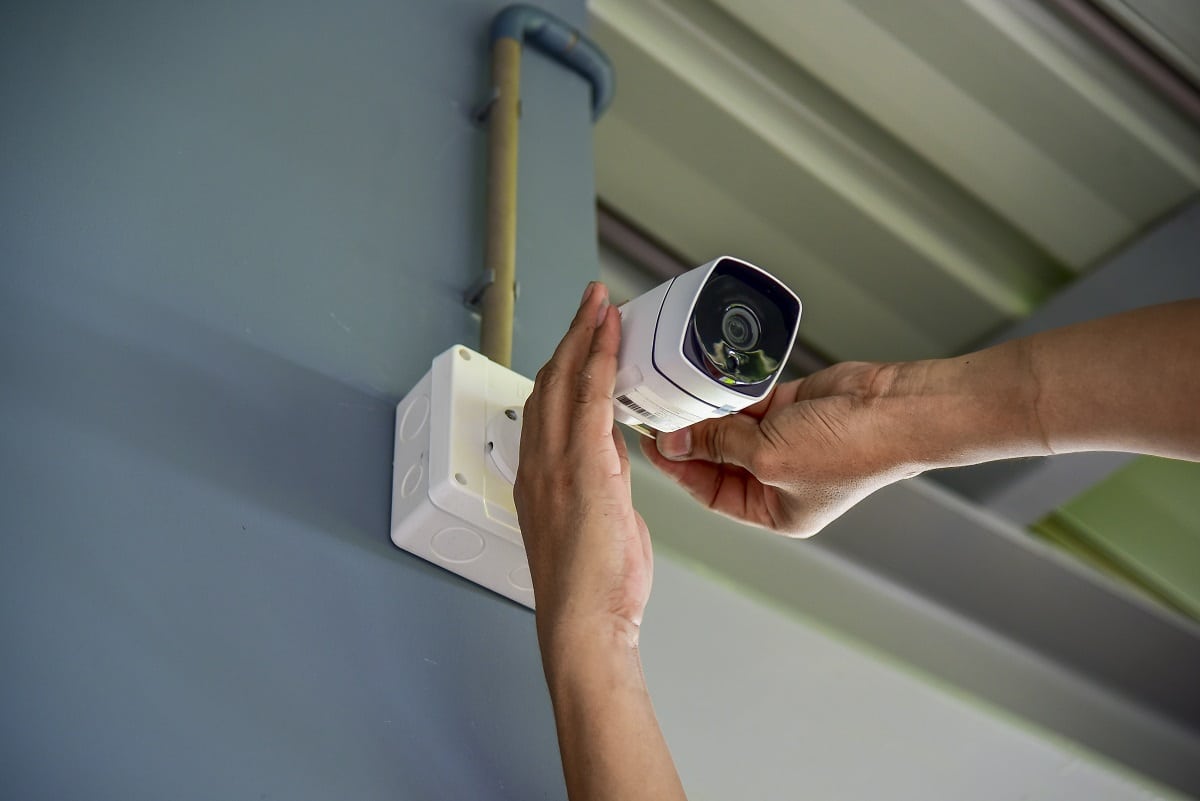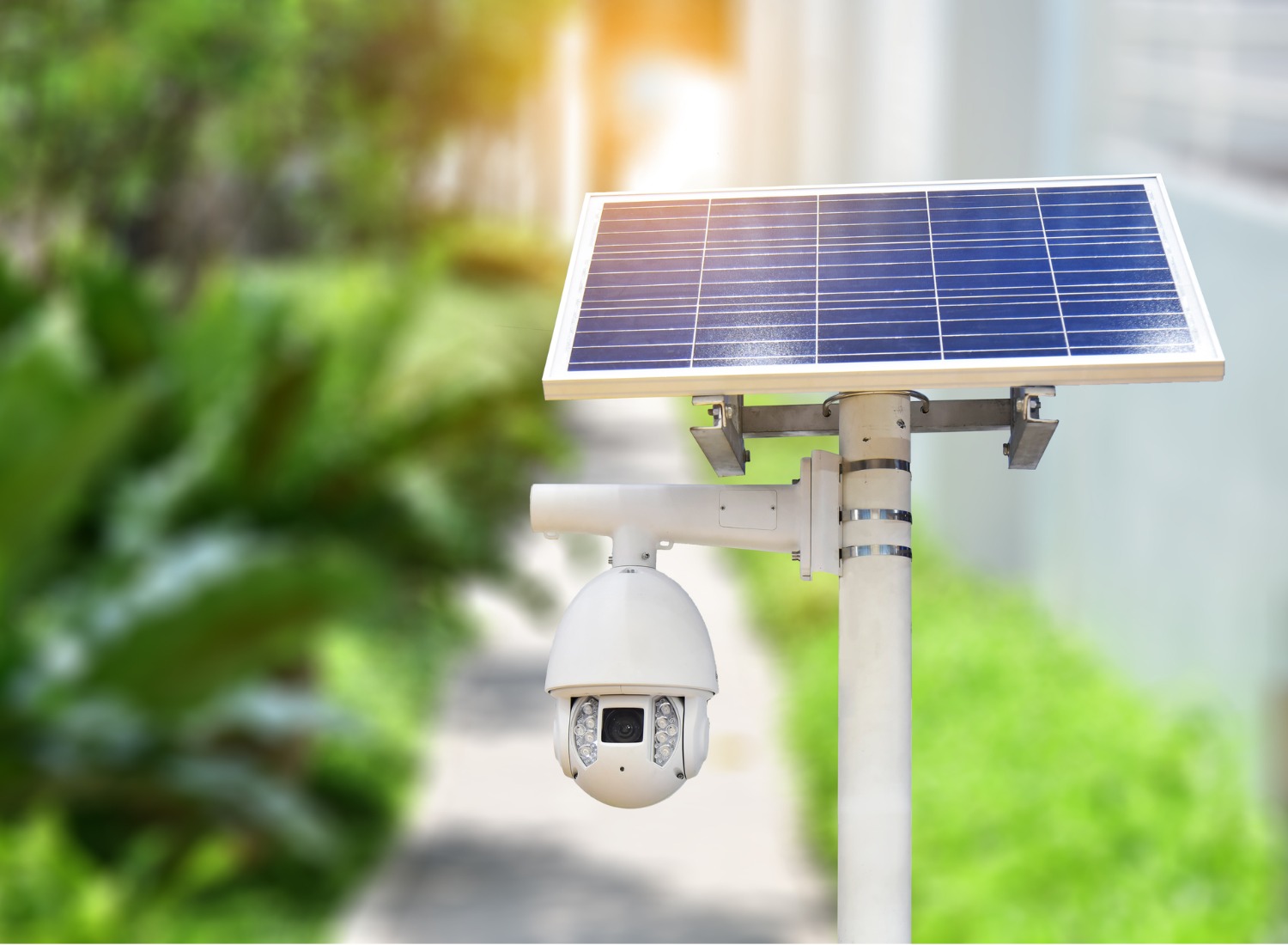Home>Furniture & Design>Outdoor Furniture>How To Get Power To Outdoor Security Camera


Outdoor Furniture
How To Get Power To Outdoor Security Camera
Modified: February 18, 2024
Learn how to ensure a reliable power source for your outdoor security camera with our expert tips and recommendations. Keep your outdoor-furniture-furniture-and-design safe and secure.
(Many of the links in this article redirect to a specific reviewed product. Your purchase of these products through affiliate links helps to generate commission for Storables.com, at no extra cost. Learn more)
Introduction
Welcome to the world of outdoor security cameras! These vigilant guardians stand watch over our homes, ensuring safety and peace of mind. However, to keep them up and running, a crucial consideration is their power source. In this comprehensive guide, we will delve into the various power options available for outdoor security cameras, shedding light on the pros and cons of each. By the end of this journey, you will be equipped with the knowledge to make an informed decision about the best power source for your outdoor security camera, ensuring uninterrupted surveillance and enhanced security for your home. So, let's embark on this illuminating exploration of outdoor security camera power options!
Key Takeaways:
- Choose hardwired power for reliable and continuous operation, ideal for areas with consistent power needs. Consider professional installation and backup power for uninterrupted surveillance.
- Solar power offers eco-friendly and cost-effective surveillance, but consider sunlight availability and upfront investment for remote or off-grid locations.
Understanding Power Options for Outdoor Security Cameras
When it comes to powering outdoor security cameras, various options exist, each with its unique advantages and considerations. Understanding these power options is crucial for selecting the most suitable solution for your specific needs. Let’s explore the four primary power sources for outdoor security cameras: hardwired power, solar power, battery power, and Power over Ethernet (PoE).
As we delve into these options, we will consider factors such as reliability, convenience, sustainability, and cost-effectiveness. By weighing these aspects, you can make an informed decision that aligns with your preferences and the requirements of your surveillance setup. Let’s begin our journey through the diverse power options available to keep your outdoor security cameras vigilant and operational.
Hardwired Power
Hardwired power, also known as wired power, involves connecting outdoor security cameras directly to a power source using cables. This traditional method provides a reliable and continuous power supply, ensuring uninterrupted surveillance without the need for battery replacements or recharging. Typically, hardwired outdoor security cameras are connected to a power outlet or a junction box, offering a consistent flow of electricity.
One of the primary advantages of hardwired power is its reliability. Since the cameras are directly connected to a power source, there is no dependence on external factors such as sunlight or battery life. This makes hardwired cameras ideal for locations where consistent power is essential, such as areas with limited sunlight for solar panels or frequent inclement weather.
Furthermore, hardwired power eliminates the need for ongoing maintenance associated with battery-powered cameras. With no batteries to replace or recharge, the operational costs are reduced over time, making hardwired power a cost-effective solution for long-term surveillance needs.
However, the installation of hardwired outdoor security cameras may require professional assistance, especially if the placement involves routing cables through walls or underground. This can add to the initial setup costs and may not be feasible for renters or those seeking a DIY installation.
Moreover, hardwired power systems are vulnerable to power outages unless supplemented with backup power sources such as uninterruptible power supplies (UPS). In the event of a power failure, uninterrupted surveillance is crucial, making backup power a necessary consideration for hardwired setups.
In summary, hardwired power offers a reliable and continuous power supply for outdoor security cameras, making it an ideal choice for locations where consistent power is essential. While the initial installation may require professional assistance and the system may be susceptible to power outages, the long-term reliability and cost-effectiveness make hardwired power a compelling option for sustained surveillance needs.
Solar Power
Solar power presents an eco-friendly and sustainable solution for powering outdoor security cameras. By harnessing the energy of the sun, solar-powered cameras offer a self-sustaining and environmentally conscious power source. This approach is particularly advantageous for locations where access to traditional power sources may be limited or impractical.
One of the key benefits of solar power is its independence from grid-based electricity, making it an ideal choice for remote or off-grid locations. The installation of solar-powered outdoor security cameras is often more flexible, as it does not require proximity to power outlets or extensive wiring. This flexibility allows for strategic camera placement in areas that may be challenging to reach with traditional power sources.
Furthermore, solar power contributes to long-term cost savings by eliminating ongoing electricity expenses. Once the solar panels and associated equipment are installed, the cameras can operate without incurring additional power costs, making this an economically viable option over time.
However, solar power is dependent on sunlight, which can pose challenges in areas with limited sunlight or during prolonged periods of inclement weather. To mitigate this, some solar-powered camera systems incorporate battery backup to ensure continued operation during low-light conditions or when sunlight is unavailable.
Additionally, the initial setup of solar-powered outdoor security cameras may involve a higher upfront investment compared to traditional hardwired or battery-powered options. This includes the cost of solar panels, charge controllers, and possibly battery storage systems. While the long-term savings on electricity bills offset this initial investment, it is important to consider the upfront costs when evaluating solar power as a power source.
In summary, solar power offers a sustainable and cost-effective solution for powering outdoor security cameras, especially in remote or off-grid locations. While it provides independence from traditional power sources and contributes to long-term savings, considerations such as sunlight availability and upfront investment should be carefully weighed when opting for solar-powered surveillance systems.
Consider using a weatherproof outdoor power outlet or a power over Ethernet (PoE) adapter to supply power to your outdoor security camera. This will ensure a reliable and safe power source for your camera.
Battery Power
Battery power provides a versatile and portable solution for powering outdoor security cameras. This option offers flexibility in camera placement, allowing for easy installation in locations where access to traditional power sources may be limited or impractical. Battery-powered cameras are often designed for quick and straightforward setup, making them an attractive choice for DIY installations.
One of the primary advantages of battery power is its independence from electrical outlets and wiring, offering a wireless and hassle-free installation experience. This versatility allows for temporary surveillance needs, such as monitoring outdoor events or construction sites, without the constraints of fixed power sources.
Additionally, battery-powered outdoor security cameras are not affected by power outages, ensuring continuous surveillance even during electrical disruptions. This reliability makes them a dependable option for locations prone to frequent power interruptions or for users seeking uninterrupted monitoring capabilities.
However, the reliance on batteries introduces ongoing maintenance and replacement considerations, as the cameras require periodic battery changes or recharging. The frequency of battery replacements varies based on factors such as camera usage, environmental conditions, and the type of batteries used. This ongoing maintenance aspect should be factored into the overall operational cost of battery-powered surveillance systems.
Moreover, extreme temperatures can impact battery performance, potentially affecting the operational efficiency of battery-powered outdoor security cameras. In regions with harsh climates, considerations should be made to mitigate the effects of temperature extremes on battery life and overall system reliability.
While battery power offers flexibility and independence from traditional power sources, it is essential to consider the ongoing maintenance requirements and potential environmental factors that can influence battery performance. By evaluating these aspects, you can determine whether battery-powered outdoor security cameras align with your surveillance needs and operational preferences.
Power Over Ethernet (PoE)
Power over Ethernet (PoE) technology provides a streamlined and efficient power solution for outdoor security cameras, integrating power and data transmission into a single network cable. This approach simplifies the installation process and eliminates the need for separate power cables, offering a cost-effective and organized setup for surveillance systems.
One of the key advantages of PoE is its ability to deliver both power and data over a single Ethernet cable, reducing the complexity of wiring and infrastructure requirements. This consolidated approach streamlines the installation process, particularly for locations where running separate power lines may be challenging or impractical.
Furthermore, PoE technology facilitates remote power management and monitoring, allowing for centralized control and configuration of the power supply to connected cameras. This centralized control enhances operational efficiency and simplifies maintenance tasks, enabling seamless power management across multiple camera installations.
Moreover, PoE offers flexibility in camera placement, as it eliminates the constraints of traditional power outlets and allows for strategic positioning of outdoor security cameras based on surveillance needs rather than proximity to electrical sources. This flexibility contributes to optimized camera placement for enhanced monitoring capabilities.
However, it is essential to ensure that the network infrastructure, including switches and injectors, supports PoE functionality to effectively power outdoor security cameras. Additionally, the distance limitations of Ethernet cables should be considered when planning the placement of PoE-powered cameras, as extended cable runs may require additional equipment to maintain power delivery over longer distances.
In summary, Power over Ethernet (PoE) technology offers a streamlined and efficient power solution for outdoor security cameras, integrating power and data transmission into a single network cable. With its simplified installation process, centralized power management, and flexibility in camera placement, PoE presents a compelling option for powering surveillance systems, especially in environments where traditional power wiring may present challenges.
Conclusion
As we conclude our exploration of power options for outdoor security cameras, it is evident that each approach offers distinct advantages and considerations. Hardwired power provides reliable and continuous operation, making it ideal for locations where consistent power is essential. While the initial installation may require professional assistance, the long-term reliability and cost-effectiveness make hardwired power a compelling choice for sustained surveillance needs.
Solar power presents an eco-friendly and sustainable solution, offering independence from grid-based electricity and long-term cost savings. However, considerations such as sunlight availability and upfront investment should be carefully weighed when opting for solar-powered surveillance systems, especially in remote or off-grid locations.
Battery power provides flexibility and portability, making it suitable for locations with limited access to traditional power sources. The wireless and hassle-free installation experience, coupled with uninterrupted surveillance during power outages, positions battery-powered cameras as a versatile option for various surveillance needs. However, ongoing maintenance and environmental factors that may impact battery performance should be taken into account when evaluating this power source.
Power over Ethernet (PoE) technology streamlines the power and data transmission process, simplifying installation and offering centralized power management capabilities. With its consolidated approach and flexibility in camera placement, PoE presents a compelling option for powering outdoor security cameras, especially in environments where traditional power wiring may present challenges.
Ultimately, the selection of a power source for outdoor security cameras should align with the specific requirements, environmental conditions, and operational preferences of the surveillance setup. By carefully evaluating the advantages and considerations of each power option, you can make an informed decision that ensures reliable and uninterrupted surveillance, enhancing the security and monitoring capabilities of your outdoor space.
Whether you opt for hardwired power, solar power, battery power, or Power over Ethernet (PoE), the power source you choose will play a pivotal role in sustaining the vigilance of your outdoor security cameras, contributing to a safer and more secure environment for you and your loved ones.
Frequently Asked Questions about How To Get Power To Outdoor Security Camera
Was this page helpful?
At Storables.com, we guarantee accurate and reliable information. Our content, validated by Expert Board Contributors, is crafted following stringent Editorial Policies. We're committed to providing you with well-researched, expert-backed insights for all your informational needs.















0 thoughts on “How To Get Power To Outdoor Security Camera”